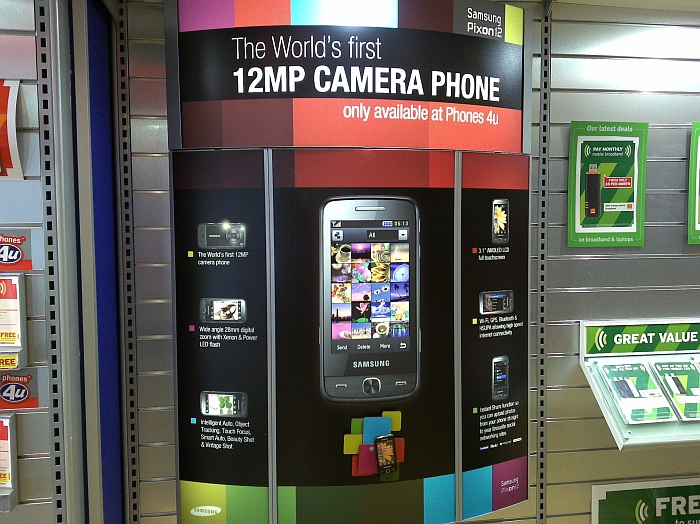
And so phones are now being sold on the strength of '12 megapixels'... You may remember my Camera Nitty Gritty feature on The Megapixel Myth? Looking at image samples from different camera phones, I concluded that 3 megapixels is enough for the typical photos, with perhaps 5 megapixels for those wishing to crop and do image processing later on. The very thought of shooting a snap of your dog or friend down the pub or a nice flower at 12 megapixels horrifies me, from the standpoint of elegance and simplicity. It's just way more detail that any buyers will ever need:
- A 12 megapixel photo will have a resolution of around 4000 by 3000. Just where and how are you ever going to view such a photo? That's at least twice as large as the very largest computer monitor and roughly three times as large as the resolution of the best HD TV set.
Maybe you might want to print such a photo. At an average pixels per inch value of 250 (for a top quality photo printer), you'd be looking at a print of around A3 size (so getting on towards poster size) before any limitation in quality could be noticed from lack of resolution in the original image.
The two most common forms of viewing photos, on 6x4" or 7x5" prints or on a computer monitor, require only 3 megapixels for full quality.
- A 12 megapixel photo will have a file size of around 2 to 3 megabytes (perhaps more, depending on settings and subject). This means a lot more data to save on your memory card, and a lot more to send to others, via Bluetooth or email or via a photo sharing service from the phone.
- A 12 megapixel photo will take longer to save to card, meaning longer shot-to-shot times, and longer to load up later on, when browsing through your phone's photo gallery.
In addition to the maths simply not making sense, there's also not much point in making the resolution so high when the sensor size (in inches/cm) and optics are so comparatively weak (relative to those in a standalone camera). You'll end up with a photo that has 12 million pixels but no better actual detail and no better handling of shades of light and dark than a good 5 mp or 8 mp camera phone with decent (e.g. Carl Zeiss) optics. And take the light levels down, such as in the evening and indoors, and you've simply got 12 megapixels of low light noise*...
Will the ne'ersayers like me have any effect on a world of marketing gone mad? Of course not, I'm just a 'voice in the wilderness'** crying out that the world's gone quietly mad. Would I rather have a phone with a 12 megapixel camera, or one with a 3 megapixel camera, a qwerty keyboard and twice the battery life for the same purchase price? It's really not a hard decision.
And don't get me started on camera phone 'gimmicks', such as smile detection.... that's a rant for another day, I feel....
Steve Litchfield, All About Symbian
* Though, admittedly, the example phone mentioned, the Samsung Pixon12, does have Xenon flash, so low light shots shouldn't be too bad in terms of overall illumination...
** Matthew 3:3
